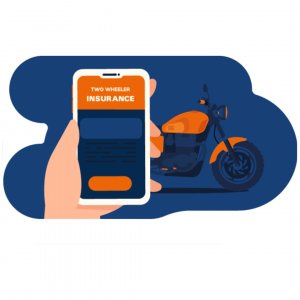Understanding Return to Invoice Coverage (RTI) in Auto Insurance
What does auto insurance’s Return to Invoice Coverage (RTI) mean?
Return to invoice, or RTI, is a benefit included in all-inclusive auto insurance policies. With the add-on, you can get paid the invoice value of the car—that is, the amount it was originally worth when you purchased it. When an automobile is beyond repair or is stolen, the claim is applicable.
For example, you can find yourself in a tough and dangerous scenario if your car is stolen and the authorities are unable to locate it. Aside from this, you can file a claim against your car if it is involved in an accident and is irreparably damaged. RTI enters the roleplay at this point. You don’t have to worry since return to invoice insurance allows you to receive your vehicle’s original purchase value.
How does RTI Cover Work?
When your insured vehicle sustains damage that is too great for a garage to fix, your return to invoice auto insurance kicks in. It turns into a waste. A claim can be made by the policyholder to obtain payment for the loss.
The greatest amount you receive for your car is considered to be the insurance declared value for the purposes of filing an insurance claim. The IDV, however, may occasionally be less than your car’s most recent invoiced value. Older autos that experience higher rates of depreciation may experience this! The original purchase price of the car, not the insured claimed value, is what the owner receives with RTI coverage.
You must file a claim and notify your insurer of the incident. Attach all pertinent documentation, incident images (if any), and any other pertinent information. A copy of the FIR is also required in the event of theft. The insurance provider will conduct the survey and ascertain the necessary steps. You get paid after it is determined that the car is lost or irreparably destroyed. With RTI, you receive the car’s invoice value as opposed to just the IDV (Insured Declared Value) amount.
What is Covered in Return to Invoice (RTI)?
Assume you purchase a car and leave it parked on the street next to your house. After the investigation, you make a formal complaint, but the police are unable to locate the vehicle. This is the situation in which the RTI Cover may apply. To file the claim, you might need to have the original car invoice.
- Living in a theft-prone area: If you reside in an area where vehicle thefts are frequent, get an RTI coverage.
- Non-availability of secured parking: Larger cities are where this frequently occurs, but with Insurance broker top-up, you can sleep well and worry-free!
- Financial Burden: Forget about worrying about having to pay large amounts of money in the event that your car is stolen or suffers irreparable damage!
- Natural Calamity Prone Area: Having an RTI from HDFC ERGO provides you with a workable approach to prevent further financial strain if you live on a hillside or in a region where floods frequently occur.
What is not covered in Return to Invoice (RTI)?
Some of the situations cannot be covered under the RTI insurance. These are:
- Small Dents or minor damages: Small dings and scratches on the car’s body do not qualify as irreversible damage. The RTI add-on is therefore not applicable.
- Third-party (TP) Liability Policy: Irreparable damage does not include small dents and graze on the body of the vehicle. So, the RTI add-on is not applicable.
- Age of Car: RTI add-ons for cars are available for three years after the date of purchase. The same is specified by HDFC ERGO for customers considering purchasing an RTI add-on.
- Lack of FIR: To handle the RTI claim, Insurance brokers have to receive a copy of the FIR. We have verified this with the relevant authorities.
How is RTI Calculated?
An RTI claim figure is approved by Insurance broker following a comparison of two values according to the following:
- The invoiced price of the car, which includes the purchase registration, road tax, and ex-showroom price.
- The ex-showroom price point, registration fees, and any road taxes are factored into the car replacement cost.
- For cars with an RTI add-on, the smaller of these two amounts is approved as the claim amount.
How much does Return To Invoice Cost?
The age and model of the car determine the price of RTI add-ons. Simple calculators are available from HDFC ERGO to help you comprehend the value. The premium for comprehensive coverage without RTI is about 10% higher than the premium for RTI.
How to opt for RTI Cover?
An optional benefit that can be added to a comprehensive auto insurance policy is return to invoice coverage. This is how you can choose to do so:
- Active Comprehensive Plan: RTI coverage is an option if you currently have comprehensive auto insurance and want to renew your policy.
- No Active Comprehensive Plan: When your auto insurance is up for renewal, you have the option to change policies if you don’t have comprehensive coverage. To obtain RTI coverage right away, you can also cancel your current policy and choose a new one.
Advantages of RTI Add-on Cover
- Best suited for new cars: This is predicated on HDFC ERGO’s comprehension that, in the event of irreversible damage, new autos must be compensated for the whole invoice price.
- Broadens the Scope of Coverage: An IDV-compliant basic auto insurance policy won’t provide you with the same level of security as one that includes an RTI add-on.
- Increased protection against total damage: You receive a value that almost matches the car’s original purchase price.
- Advantageous in the event of theft: This offers you comfort on the inside as well as the knowledge that you will get the most money back in compensation.
- If the damage is too great to fix, get a comparable model of the car: With the Insurance plan, you might receive a respectable amount that is as near to the original billed amount as feasible. However, this has no bearing on TP problems.
- Available with Own Damage: You can only use the RTI claim coverage if you sustain damage to your own vehicle. It does not apply to damages incurred by third parties.
When is RTI Applicable?
Return to Invoice is a really useful cover, but before you choose it, make sure it applies to you. Remember that you can only file a claim for the following circumstances and not for minor car damage and repairs.
- If your automobile is reported stolen and the authorities are unable to locate it, the RTI coverage will kick in.
- If the vehicle is completely destroyed following an accident. This indicates that the car’s repair costs exceed its IDV.
- Only vehicles under three years old are eligible for return to invoice insurance. This is due to the car’s significant value depreciation after three years.
How is RTI different from IDV?
| Return to Invoice | Insured Declared Value | |
|---|---|---|
| Meaning | RTI is an optional coverage that is not included in the basic auto insurance plan. | IDV is covered under an automobile insurance policy’s base plan. |
| How Does it Work? | With this add-on, the policyholder gets the claim without deducting the vehicle’s depreciation value. | It helps fill the gap between the IDV and the car’s invoice value during claim settlement. |
| Premium | Here you will have to pay about 15%-20% higher on your standard premium amount. | RTI premium is mostly 10% higher than premium for comprehensive coverage. |
| Example | Mr. A’s car met with an accident and required repairs. Since he had zero dep cover, he got the total claim amount as the depreciation of car parts was not considered. | Mr. Y’s car was stolen and was declared untraceable. However, since he has the RTI Add-on, he got the purchase invoice value of the car. |
Who Should Opt for a Return to Invoice Protection Cover?
Many auto insurance add-ons are available for purchase with coverage. But not every policyholder benefits from every Add-on. It is therefore claimed that before purchasing a car insurance add-on, a person should evaluate his or her own needs. It would be a waste of money and coverage, for instance, to get an accessories cover but leave your car without any extra equipment. Similarly, not everyone will benefit from purchasing a Return To Invoice cover. The following list of profiles can be used to purchase the RTI Add-on:
- Who: Owners of new cars
- Why: Because the Return To Invoice cover is available for new cars.
- Who: People who reside in a theft-prone area
- Why: Theft is claimable against RTI
- Who: People living in areas where natural calamities are common.
- Why: Natural calamities can cause total loss which is covered under RTI
Comparison: ZERO Depreciation vs Return to Invoice Add-on Covers
Questionnaire
| Question | Yes | No | Return to Invoice | Zero Depreciation |
|---|---|---|---|---|
| Do I have a brand new car? | ✔ | Χ | Yes | No |
| Do I have a brand new car? | Χ | ✔ | No | Yes |
| Are there chances of car theft? | ✔ | Χ | Yes | No |
| Are there chances of car theft? | Χ | ✔ | No | Yes |
| Are natural calamities common in the area where I live? | ✔ | Χ | Yes | No |
| Are natural calamities common in the area where I live? | Χ | ✔ | No | Yes |
| Am I a rash driver? | ✔ | Χ | Yes | No |
| Am I a rash driver? | Χ | ✔ | No | Yes |











